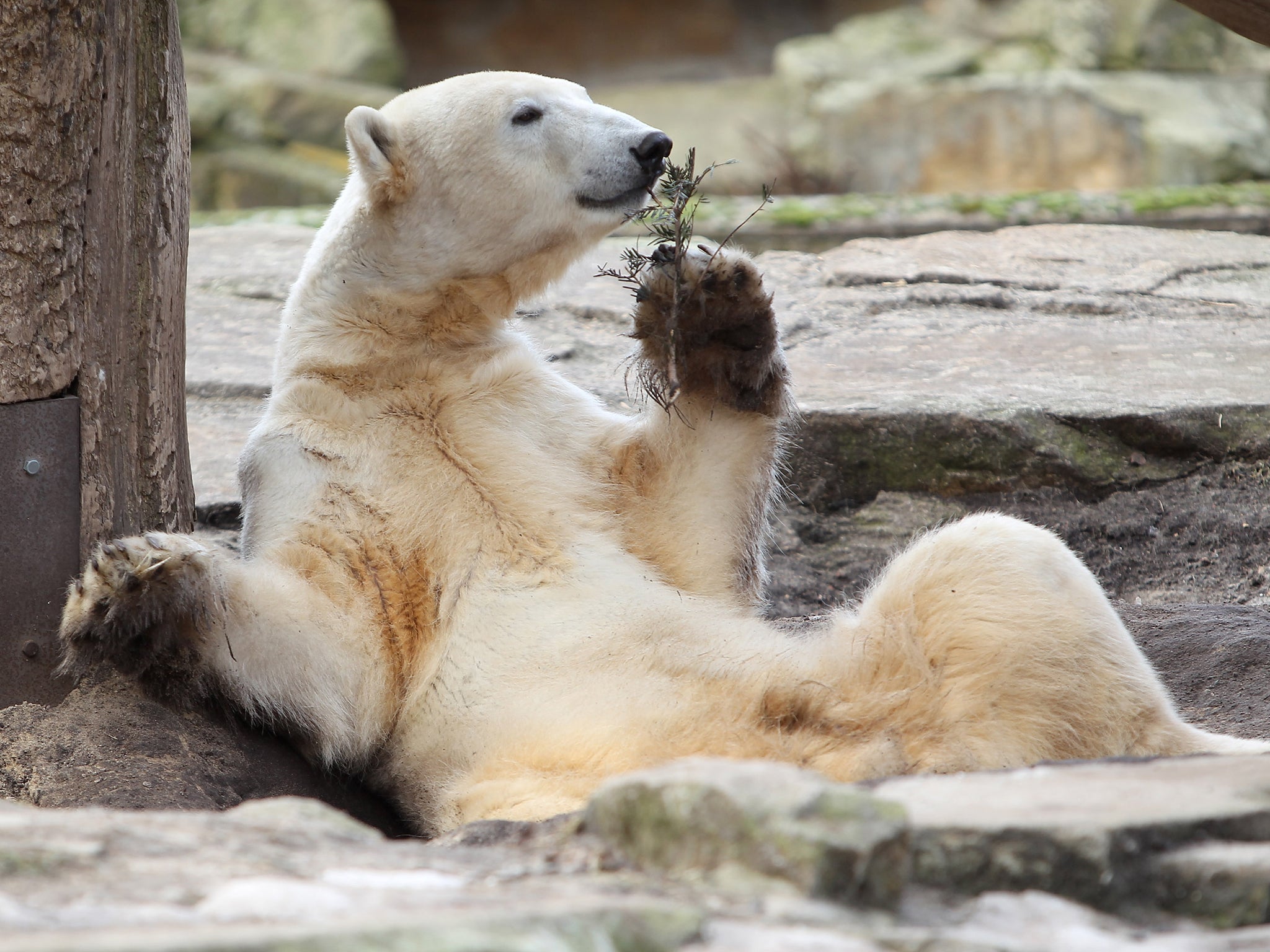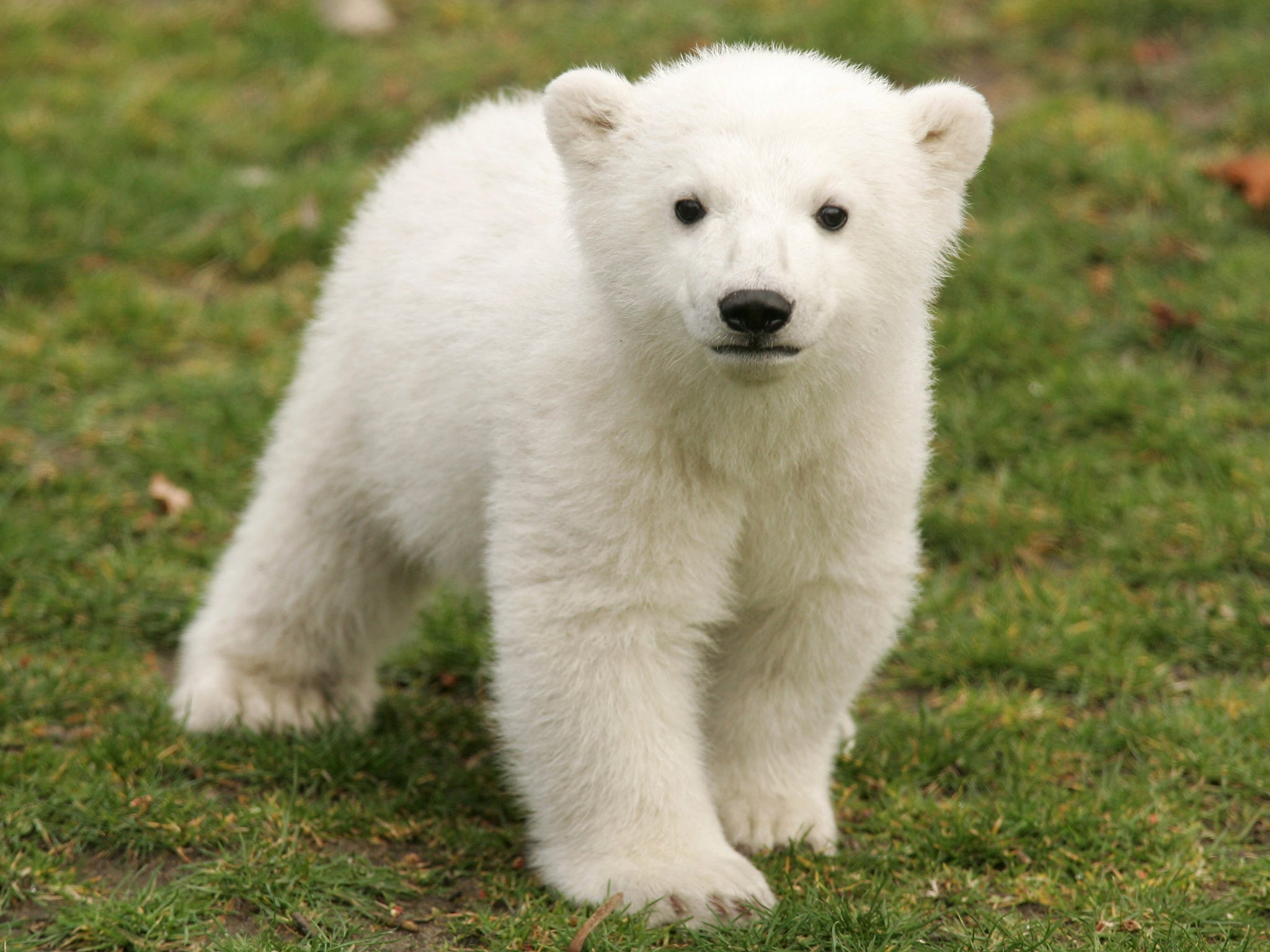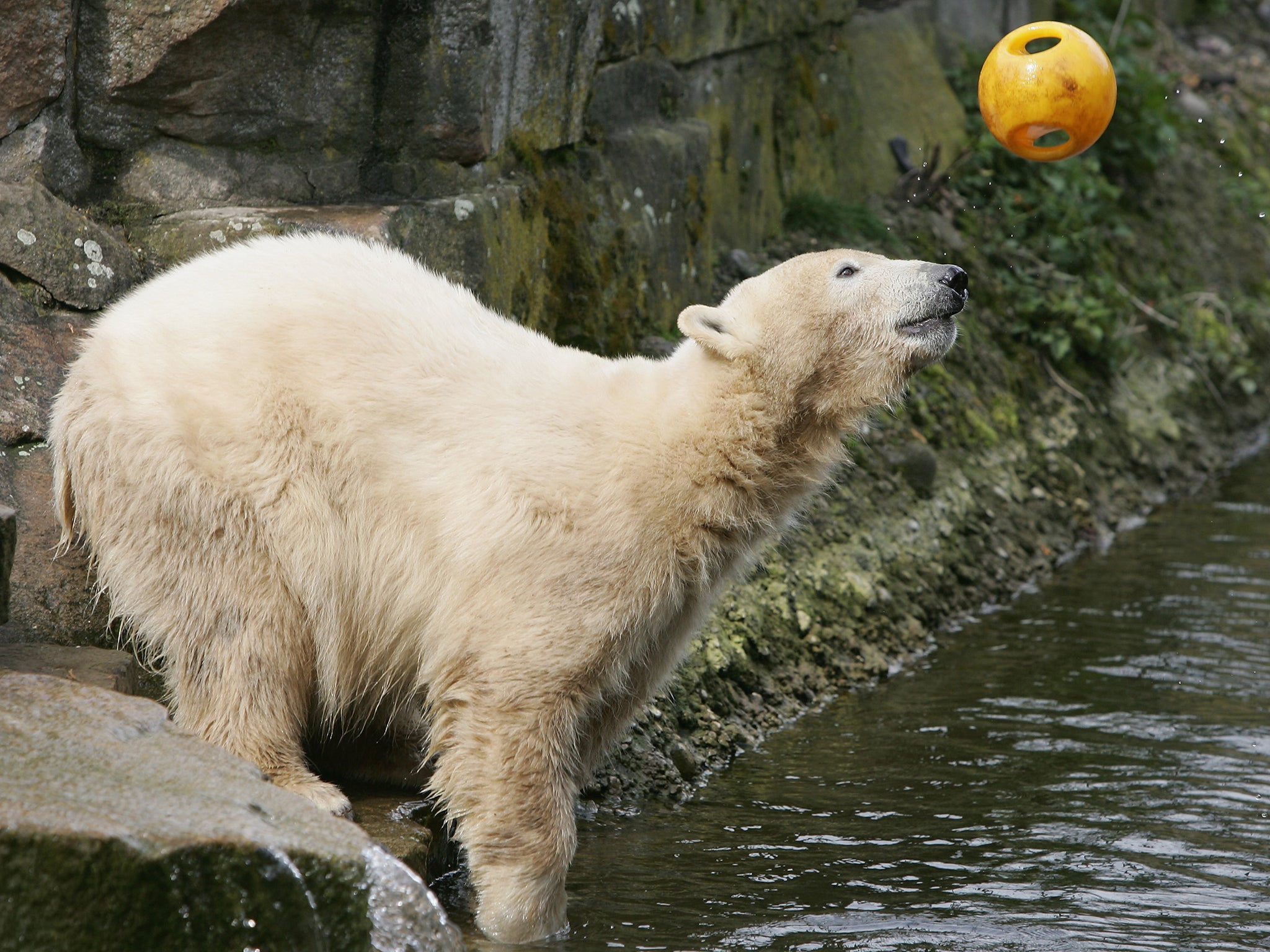Mystery of celebrity polar bear Knut's death finally solved
Scientists say wild polar bears may also suffer the same brain disorder as Knut

Your support helps us to tell the story
From reproductive rights to climate change to Big Tech, The Independent is on the ground when the story is developing. Whether it's investigating the financials of Elon Musk's pro-Trump PAC or producing our latest documentary, 'The A Word', which shines a light on the American women fighting for reproductive rights, we know how important it is to parse out the facts from the messaging.
At such a critical moment in US history, we need reporters on the ground. Your donation allows us to keep sending journalists to speak to both sides of the story.
The Independent is trusted by Americans across the entire political spectrum. And unlike many other quality news outlets, we choose not to lock Americans out of our reporting and analysis with paywalls. We believe quality journalism should be available to everyone, paid for by those who can afford it.
Your support makes all the difference.He appeared on the cover of Vanity Fair, was intimate with Hollywood film stars and was a box-office sensation. Now scientists can write the final chapter in the story of Knut the polar bear who drowned in 2011 in his outdoor enclosure after an epileptic fit brought on by a mysterious brain disease.
Tests on his preserved brain tissue has revealed that Knut, a four-year old polar bear raised by hand after being abandoned by his mother in Berlin Zoo, suffered from “anti-NMDA receptor” encephalitis caused by an attack by the bear’s immune system on his own brain cells – the first time the autoimmune condition has been found outside humans.
Scientists said that the non-infectious condition probably had nothing to do with his captivity or the fact that he was hand-reared by a devoted zoo keeper, who himself tragically died of a heart attack at the age of 44. Wild polar bears may also suffer the same brain disorder as Knut but just never get diagnosed, the researchers said.

“Until now, this autoimmune disease has only been known in humans. In this illness, the body’s immune system overreacts and produces antibodies which damage nerve cells instead of fighting against pathogens,” said Harald Prüss of the German Centre for Neurodegenerative Diseases in Berlin.
A study, published in the journal Scientific Reports, found that the autoimmune disease attacked the anti-NMDA receptors within Knut’s brain, which are involved with the transmission of signals between nerve cells.

“Epileptic seizures, hallucinations and dementia are among the possible symptoms….In humans this disease is relatively responsive to medical treatment,” Dr Prüss said.
Knut’s life was a modern fairy tale, or horror story depending on your point of view. His first public appearances as a cute white cub saw attendance figures at Berlin Zoo soar by 30 per cent. He became so famous that celebrity photographer Annie Leibovitz was dispatched by Vanity Fair to take his picture, which was superimposed next to one of Hollywood legend and eco-warrior Leonardo DiCaprio standing on ice.
Knut’s fame spread far and wide, especially after an animal rights activist suggested that it was cruel to raise a polar bear in captivity and it would have been better to have allowed him to die – a suggestion that caused outrage among Knut’s many adoring fans.
Silver coins were minted in his honour in Germany and stamps bearing his image were printed in Azerbaijan. Plastic replicas, DVDs and assorted tat followed, and he was deemed such a commercial success that one zoo attempted to sue another over who owned the commercial rights to Knut, whose name was registered as a trade-mark.

However, it all ended tragically when Knut suffered a fit in full view of several hundred zoo visitors on 19 March 2011, causing him to slide under the water of a pool in the outdoor enclosure that he shared with a handful of other polar bears at Berlin Zoo.
Although encephalitis was suspected, it is not until now that scientists have been able to confirm the precise type of autoimmune disease that caused the seizure.
“We were quite intrigued by this result. The anti-NMDA receptor encephalitis has been described only very recently in humans. Clearly it is also of importance for other mammals. We are relieved to have finally solved the mystery of Knut’s disease,” said Professor Alex Greenwood of the Leibniz Institute for Zoo and Wildlife Research.
“He captured the public’s imagination by being abandoned by his mother and being hand-raised. Then you had the tragic death of the zoo keeper himself. Knut drew in 15 million visitors and then had a very spectacular death that was very public,” Professor Greenwood said.
“We’ve happened to end the story now by explaining how he died. There’s some closure now,” he said.
Join our commenting forum
Join thought-provoking conversations, follow other Independent readers and see their replies
Comments